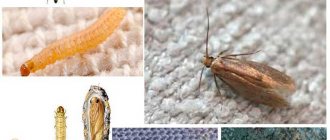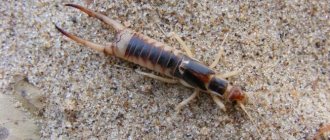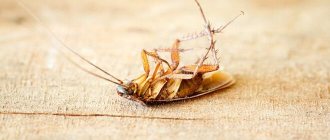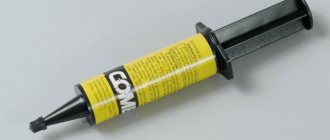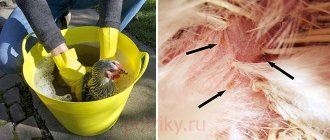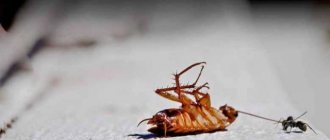Varroa mites
Varroa Destroyer (formerly called Varroa jacobsoni, a species of mite found in Malaysia and Indonesia) is a relatively new invader of hives in North America. They appeared in the USA in 1987. They are like mites - they attach themselves to bees and suck out the blood and lymph of adult bees, and then climb into the cells before they are sealed and reproduce there during the larval development period. The female bee enters the cell 1-2 days before it is sealed - attracted by the pheromones released by the bee larva before sealing. The female tick feeds on the larva for some time, and then begins to lay eggs - one approximately every 30 hours. The first egg is male (haploid), all the others are female (diploid). In an increased cell size (see section on cell size), a female mite can lay up to 7 eggs. Since underdeveloped mites will not be able to survive when the bee larva hatches, 1-2 female mites will survive. They will mate before the larva hatches and leave the cell together with a host bee. Varroa mites are large enough that you can see them with the naked eye. They are like freckles on a bee's body. They are red-brown in color and oval in shape. If you look closely at them or use a magnifying glass, you can see their short legs. To monitor your hive for varroa mites, you will need a screened bottom board and a piece of white cardboard. If you don't have a screened bottom board then you will need a sticky board. You can buy them or make your own using a piece of #8 wire mesh over a piece of sticky paper - the kind you use to line the cabinets will work. Place a board under the hive, wait 24 hours and count the mites. It is better to do this at intervals of several days and average the numbers. If you have a few ticks (0 - 20), then this is not so bad, if there are 50 or more of them in 24 hours, this is already a reason to do something.
I think the goal should be to avoid processing. But here are some options.
General characteristics of the pest and its danger
Mites of the genus Varroa (Varroa Jacobsoni and Varroa destructor) parasitize honey bees. They affect both larvae and adult insects, weakening them. In addition, ticks are carriers of many dangerous diseases that cause the death of bees.
Bee mites are small parasites (about 1.5 mm in size) with a round body of brown (in females) and milky white (in males) color. But one bee or larva can be simultaneously parasitized by 7-8 mites.
Infected insect
Some ways to combat the use of chemicals
Apistan (Fluvalinate) and Checkmite (Coumaphos) are the most common acaricides for tick control. Both penetrate the wax and both cause contamination of the hive and problems for the bees. I don't use them.
Gentle chemicals that are used to control mite numbers are thymol, oxalic acid, formic acid and acetic acid. Organic acids are already naturally present in the hive and are not considered a contaminant by some. Thymol gives the smell to Listerine (mouthwash), and although it is present in thyme honey, its presence is not typical of any other honey. I used oxalic acid as a control during the transition to small cells and was pleased with the results. I used a simple vaporizer that was on Dennis Murrell's website.
Signs of infection
During the first 2 years the disease develops unnoticed. Then a large number of mites appear (especially in the summer), which infect up to 30% of the bees. Bees and drones have characteristic disadvantages:
- absence or defective development of legs and wings;
- body deformation;
- The brood is variegated in color.
Other signs:
- Bee losses increase sharply, mainly in October-November. During this period, infection increases several times.
- In the autumn-winter period, bees become exhausted faster, as a result, colonies die or emerge from wintering very weakened.
- During wintering, bees behave very restlessly - they make noise and jump out.
- The bottom of the hives is covered with dead bees, on which brown mites can be seen.
- With a high degree of varroa infection, the death of bee colonies begins in the first half of wintering.
- After the main honey collection, upon returning from migration, heavily infected families leave their hives. Even a sufficient amount of food does not stop them.
Neutral chemicals against varroa mites
Vaseline edible oil is popular from this group. Dr. Pedro Rodriguez is a supporter and researcher. His original system consists of cotton cords impregnated with an emulsion of petrolatum edible oil, beeswax and honey. The goal is to coat the bees in Vaseline oil for a long period of time so that the mites either slide off the bees or are suffocated by the oil. Another advantage of vaseline oil vapor is that it apparently kills tracheal mites at the same time. But this can also be seen as a disadvantage, since you may be supporting bees that are genetically unable to cope with tracheal mites.
Physical methods
Some methods are beehive attachments and the like. Some beekeepers have noticed that there are fewer mites in hives with pollen traps - perhaps the mites fall off the bees as they pass through the trap. The result was shielded bottom boards. This is the bottom board of the hive that has a hole in it covered with a piece of #7 or #8 wire mesh. This allows the mites to fall off the bees and fall down where they cannot climb back onto the bees.
Research shows that this eliminates about 30% of mites. I seriously doubt these numbers, but I like the screened bottom boards - they're great for checking for mites, monitoring ventilation, and help with any kind of monitoring you do.
How long does it take to treat bees?
The duration of treatment of bees depends on the degree of infection of the swarm, the type of parasites, the chosen method and preparations. Chemicals help after 1-2 treatments. If more gentle methods are used, it may take much longer, but the number of parasites will steadily decrease.
Treatment
What am I doing
I use small/natural honeycomb cells and mesh trays in the hives and monitor for mites using a white sheet in the tray. As long as the mites are under control, and from 2002 to this day they have been, that's all I do. If suddenly the number of mites increases while the stores are installed, I will probably fumigate the hive with edible mineral oil or spray powdered sugar. If after collecting the honey the number of mites does not decrease, I will treat the hive with oxalic acid vapor. However, I haven't needed any of this since my bees have regressed to their natural cell size. Therefore, the use of small cells is quite effective for me against both types of mites and is suitable for normal conditions.
Types of tick-borne infestations
There are several species of mites that parasitize honey bees. Depending on the type of parasite, the following diseases occur:
- acarapidosis;
- varroatosis (varroosis);
- euvarroz;
- tracheal mite infection.
Treatment is selected taking into account the species of the parasite.
Acarapidosis
The disease is caused by a microscopic mite that lives in the trachea of insects. Acarapidosis affects only adult bees - queen bees, worker bees and drones. The onset of the disease is asymptomatic. Over time, loss of blood leads to exhaustion of bees, and blockage of the trachea with waste products of mites provokes breathing problems.
Varroatosis
After mating, female varroa mites tend to the bee's brood, choosing one that is not yet 9 days old. Here the female lays eggs, from which larvae emerge after 3 days. Mites attack the developing insect and exit the cell with it. The result is the birth of a weak bee, often small in size, with a deformed body.
Bee mite
Euvarroz
The causative agents of the disease, Euvarroasinha mites, parasitize exclusively on drones. As a result, the number of brood decreases, which means the family size gradually decreases.
Tracheal mite
This type of tick has long been considered a subspecies of the parasite that causes acarapidosis. But recent research proves that the tracheal mite is a separate species. Small parasites infect worker bees by feeding on soft tissues.
More about Varroa
I won't go into a discussion about which method is most effective, but rather what I think is important to the success and sometimes the reason for the failure of many of the methods that we beekeepers try to use. I only used petrolatum oil vapor for a couple of years and when I finally killed all the mites with oxalic acid, by the end of those two years I found that the hives had about 200 mites per hive. This is a very small value. But some have seen their numbers skyrocket to thousands and thousands in a short time.
This is partly, of course, due to the fact that the brood appears already infested with mites. But I believe that using petrolatum mineral oil (as well as other systems) results in a stable population of mites in the hive. In other words, the number of ticks that die is the same number that appears. Many methods lead to this. SMR queens are queens that reduce the ability of mites to reproduce. But even if you have managed to achieve a stable mite population, this does not prevent thousands of hitchhiker mites from entering the hive from outside. Using powdered sugar, small cells, mineral oil, or anything that keeps the bees alive while reducing the number of mites or preventing them from multiplying works under some conditions. I believe that such conditions are only possible if there are no significant numbers of mites entering the hive from other sources.
All these methods sometimes turn out to be useless when the number of ticks suddenly increases in the fall.
Then it makes sense to pay attention to more brutal methods. In other words, they kill almost all ticks. And even they sometimes have no effect. We believe that this is because the ticks have already developed resistance to them, and perhaps this is only one of the factors. But what if it's due to a significant influx of ticks from outside? The most effective way is to place the poison in the hive for the entire period of the outbreak of mite infestation, but sometimes this does not help.
One explanation is that it is caused by thieving and drifting bees.
“The proportion of bees belonging to other colonies within the apiary increased from 32 to 63 percent,” from a report published in 1991 by Walter Boylan-Pett and Roger Hoopingarner in Acta Horticulturae No. 288, a collection of proceedings of the 6th Pollination Symposium ( see Bee Culture January 2010, page 36).
This has never happened to me when using small cells... yet. This didn't happen when I used mineral oil either. I have observed this when using Apistane, and other beekeepers have observed this when using edible mineral oil. I'm amazed at how much of an impact this phenomenon has on our success with so many techniques, from sucracide to SMR queens, from edible mineral oil to small cells. There appear to be at least two components to success. The first is to create a sustainable system so that the mite population in the hive does not increase. The second is to find a way to monitor and stop mites from accidentally entering the hive.
The conditions when the number of mites increases at rocket speed is in the fall, when theft in the hives begins and bees carry mites from infested hives.
Prevention measures
Preventive measures will help significantly reduce the risk of bees becoming infected with mites. Recommended actions:
- regularly check the condition of insects;
- be very careful when choosing families and/or brood when purchasing;
- place the hives as far from each other as possible;
- periodically remove frames with the first and last brood;
- To strengthen the family, systematically use fertilizing.
It is desirable for the following to grow in the apiary area:
- sagebrush;
- marigold;
- tansy;
- nettle;
- coriander;
- mint;
- juniper;
- hawthorn.
The smell of these plants repels ticks.
Four simple steps to healthier bees
Smart rules to keep bees alive
I've talked about many things I've tried over the years, but for now let's focus on just 4 things: honeycomb, genetics, natural food, and no processing. Let's put aside the guesswork and just focus on the facts.
Honeycomb
I find all this debate about mesh size and whether it helps or doesn't help mite control and everything else a little tiresome. In my apiaries, mites are no longer a threat, but I still find that at every beekeeping meeting at least half the time is spent discussing the mite problem—and I end up having to talk about mites. I switched to natural cells and small cells at a time when no one believed it was possible to keep bees alive without additional processing. After stopping treatment time after time led to disastrous results, I began to think so too. But after I switched to a smaller cell size, I was pleased to note that I was back to keeping bees instead of dealing with parasites. This ridiculously obvious solution is not convincing to some - just as some similar solutions were not convincing to me until I tried it myself - only unlike me they do not have the determination to try.
But let's look at what you can choose from:
You can assume that cell size doesn't matter, if that's what you're comfortable with. However, this seems a dubious assumption because we know for sure that cell size directly affects the size of bees. If increasing the size of a bee by 150% of its natural size doesn't seem like a significant change to you, then I don't know what would count as a significant change. We know that this is a fact from Huber's research, and then there are many studies by Badu, Pinchot, Gontarski, and then there is the recent study by McMullan and Brown ("Effect of small brood cells on the morphometry of honey bees (Apis mellifera)" - John B. McMullan and Mark JF Brown)
Natural cell size
You can think whatever you want about what cell size is natural. But in the end, the only way to get to the natural cell size and allow the bees to put an end to the dispute is to stop giving the bees foundation and let them build the way they want. Firstly, this is exactly what bees do if you let them, secondly, it is less work and less cost to you than using foundation, thirdly, it is the only way to get uncontaminated comb (watch Maryann Fraser's video (Maryann Frasier) about the contamination of honeycombs with acaricides when using foundation). So, in my opinion, this is a win-win situation. Even if we assume that cell size has no effect, no one would argue that natural cell size is bad for bees. No one I know thinks that pure wax is bad for bees, and in fact, most of them believe that pure wax is one of the necessary conditions for raising truly healthy bees.
Why not just let them build the way they want?
Why don't you give your bees the opportunity to build the way they want? It seems that most beekeepers are afraid that in this case the bees will build combs only for drone brood - I have heard this from many. Obviously, this is not actually the case. If this were true, wild bees would never have appeared. If you want to know how many drone combs they will build, how many drones they will hatch, and how much influence you can have on this, read Clarence Collison's study on the subject (Levin, CG and CH Collison. 1991. Creation and distribution of drone combs and brood in colonies of honey bees (Apis mellifera L.) in a free cell configuration. BeeScience 1: 203-211.) The truth is that ultimately the bees control the number of drones, and leaving this control to their discretion will make life easier for you too, and them. When the bees build a frame with drone comb, all you have to do is move the frame to the outer edge of the frame and give them a new empty frame. Otherwise, if you remove the frame altogether, the need for drones will remain unfilled, and the bees will build another frame of drone comb - thus confirming the myth that if they are allowed, they will build drone comb and nothing else.
Honeycombs in frames?
Other concerns are that bees will not build combs within the frames. The reality is that they will draw out irregularly shaped honeycomb on a frame without foundation just as much as they will with any other honeycomb base, and they will ruin the foundation on a plastic base even more than frames without foundation. But if they do, you can at least cut out an irregular piece and attach it to a frame if it's brood, or pump out honey if it's a crop.
Honeycombs without foundation?
I have heard old people tell new beekeepers that without foundation bees will not build honeycombs at all. This is such obvious absurdity that I see no point in answering it.
No chemicals
Now we will pay detailed attention to environmental methods of treatment against ticks. Let's say you preach beekeeping without the use of chemicals and drugs. How can the treatment and healing processes of bees be carried out in this case? Promising in this case are treatment with phytoncides, herbal solutions, feeding with syrup/fed with pine needles, the use of zootechnical methods, etc.
Phytoncides
To treat with phytoncides, I use herbs that grow nearby, such as wormwood. I collect pollen inflorescences of wormwood, place them in a mesh made of gauze or old tulle and place the mesh in the space under the frame. I also use pine needles and branches, pieces of resin, etc. For any feeding, syrup/syta is used not with water, but with decoctions of pine buds, needles, wormwood branches, etc. For antiviral and antibacterial treatment I use spraying with a decoction of celandine. Separately in this series is a change in the regime of preparing bees for wintering using isolation of the queen and cutting out the drone brood.
Excision of drone brood during queen isolation in July
I have already said that the zootechnical or biological method, in which the drone brood is cut out in a sealed state, is environmentally friendly and effective. But this method will be most effective when the colony is preparing for wintering, when, along with the sealed brood of the generation of bees going into winter, there will also be drone brood that must be removed.
The mite will definitely prefer drone larvae for reproduction, and the mite removal efficiency will be very high. To implement this idea, two options are possible. Traditionally, in a strong colony, the queen lays drone eggs in June and early July. But at the end of July and, especially, in August, I am not eager to do this. That's why:
* Or consider the July bee brood (it should be in sufficient quantity) as bees going into winter, isolate the queen in a frameless insulator, and cut out the drone,
* Or at the end of July (August) isolate the queen in an insulator in a drone comb, force her to lay a drone, then release her to sow enough bee brood for the winter, cut out the sealed drone brood, and cool the nest to stop egg laying.
